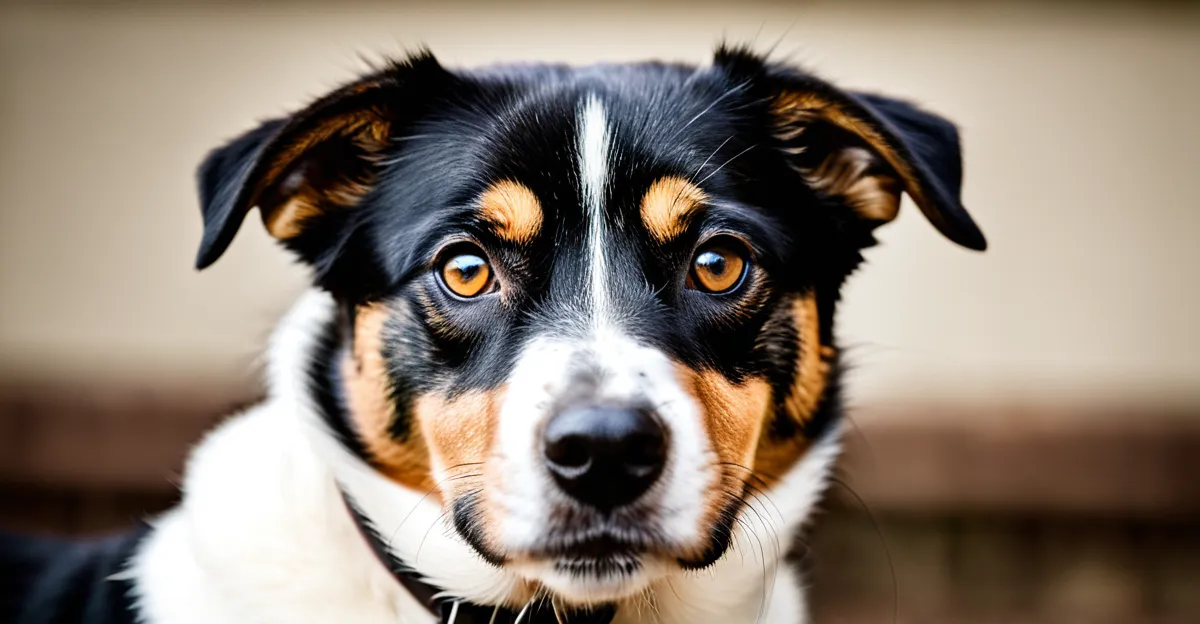Overview of Recent Pet Adoption Trends in the UK
Recent trends in pet adoption UK reflect a dynamic shift influenced by changing lifestyles and increased awareness of animal welfare. Adoption statistics reveal a steady rise in demand for companion animals, with significant attention given to dogs and cats as the most popular choices among UK adopters. This surge underscores a growing public commitment to giving homeless pets a new lease on life.
According to adoption statistics, dogs continue to dominate the pet adoption scene, followed closely by cats. Small animals such as rabbits and guinea pigs, while less numerous, also show a stable adoption rate. These patterns highlight the importance of addressing diverse pet care needs across different species.
In the same genre : How Can Owning a Pet Improve Life in the UK?
Key studies emphasize the impact of accessibility and awareness campaigns, with shelters reporting higher engagement from potential adopters due to online platforms and community outreach. The recent data also point toward a more informed public, seeking pets not only for companionship but also for mental health benefits, a factor increasingly documented in adoption surveys.
Understanding these recent trends is crucial for shelters and organizations aiming to meet demand effectively while ensuring animal welfare. Adopters today are more discerning, asking not just what pet they want but what pet suits their lifestyle, an aspect that adoption statistics increasingly capture and shelters incorporate into their guidance.
In the same genre : How Could Pet Ownership in the UK Influence Your Life Choices?
Shifting Demographics Among Pet Adopters
Demographic shifts in pet adoption UK reveal a more diverse and evolving adopter base. Recent trends in adopter profiles UK indicate significant increases in younger adults, particularly young professionals seeking companionship, alongside sustained interest from families and retirees. This suggests a broadening appeal of pet adoption across age groups and household types.
Data from shelter reports and adoption statistics show a notable rise in single-person households and dual-income families pursuing pet adoption. These groups often seek pets that fit active lifestyles or smaller living spaces, influencing pet selection and care considerations. Meanwhile, retirees contribute to steady adoption rates, valuing pets for emotional support and companionship during retirement.
Gender distribution among adopters remains fairly balanced, but slight surges in female adopters have been recorded in recent years, potentially linked to targeted outreach and welfare campaigns. The shifting demographics underscore growing public awareness and a more personalized approach to adoption, as shelters tailor guidance to match adopter lifestyles and expectations.
These evolving adopter profiles UK pose both opportunities and challenges for shelters. Innovations in education and support services respond to the varied needs of new pet owners, ensuring higher retention and welfare standards. Thus, tracking demographic data is essential for aligning resources with the changing face of pet adoption in the UK.
Impact of Recent Events on Pet Adoption
Recent external factors, particularly the COVID-19 pet adoption surge, have significantly shaped adoption patterns across the UK. During lockdowns, shelter and rescue organisations reported unprecedented increases in adoption applications, driven largely by people seeking companionship while confined at home. This surge in pandemic trends highlighted the role of pets as sources of emotional support and stress relief during uncertain times.
Post-pandemic data reveal a normalization of adoption rates, yet some shifts remain. Shelters observe that the peak demand during COVID-19 has slightly receded but left a lasting impact on public interest in animal welfare. Many new adopters gained valuable experience with pets during lockdown, increasing awareness of responsible pet ownership.
Beyond the pandemic, economic pressures and social changes continue to influence UK pet adoption. Financial constraints affect both the ability to adopt and care for pets, emphasizing the need for accessible resources. Additionally, increased awareness of animal welfare, promoted through media and community efforts, sustains adoption interest despite external challenges.
In summary, external factors like COVID-19 created a notable but complex effect on pet adoption UK, with pandemic-related trends temporarily boosting adoptions before stabilizing, while ongoing socioeconomic changes maintain evolving patterns in the adoption landscape.
Pet Preferences and Popular Breeds
Understanding pet preferences UK is essential to grasp the full scope of current pet adoption UK trends. Dogs remain the most popular pets adopted, consistently topping adoption statistics. Their appeal lies not only in companionship but also in active lifestyles many adopters lead. Following dogs, cats hold a strong position in adoption demand, appreciated for their adaptability to various living environments, especially urban settings.
Recent trends also highlight a steady interest in small animals like rabbits, guinea pigs, and other small mammals. Though less numerous than dogs and cats, these pets attract adopters seeking lower-maintenance companions or those living in smaller dwellings.
Breed preferences within dog and cat adoption reflect evolving adopter priorities. There is growing demand for medium-sized breeds and mixed breeds, which often align with lifestyle compatibility and health considerations. This shift relates closely to urban versus rural living dynamics—urban adopters commonly prefer compact or less active breeds suited for apartment life, while rural adopters may favor larger, more active breeds.
In summary, adoption statistics underscore a strong preference for dogs and cats, with breed trends adapting to modern lifestyles. Recognising these popular pets UK choices supports shelters in managing resources and tailoring advice to new adopters, ensuring better matches between pets and owners.
Emerging Adoption Practices and Innovations
Recent years have seen a significant transformation in pet adoption UK due to the rise of virtual pet adoption and digital adoption UK methods. These innovative approaches enable prospective adopters to explore and select pets remotely, removing traditional barriers related to location and time constraints. Technology has become indispensable in connecting adopters with animals, offering platforms that feature detailed profiles, videos, and live virtual meetings with shelter staff and pets.
Remote adoption processes often include online applications, virtual home checks, and video calls that provide real-time insights into pet behavior and health. This reflects a broader trend towards digitalization within the animal welfare sector, allowing shelters to reach a wider audience and streamline adoption operations. For example, some organizations use virtual meet-and-greet sessions to facilitate early bonding, increasing the likelihood of successful matches.
Case studies from innovative shelters highlight the benefits of these practices. By leveraging digital tools, shelters have not only maintained adoption rates during challenging periods such as lockdowns but also enhanced adopter engagement and education. Virtual adoption reduces stress on animals by minimizing transport and waiting times, while allowing adopters ample time to make informed decisions. This digital pivot is shaping the future of pet adoption UK, making it more accessible, efficient, and tailored to the evolving needs of both pets and people.
Regional Variations and Local Insights
Pet adoption UK exhibits notable regional pet adoption UK variations that reflect differing local cultures, population densities, and community resources. Adoption rates vary markedly between urban and rural areas, with cities often reporting higher demand but also increased challenges like limited living space. Conversely, rural regions may see lower adoption volumes but tend toward larger, more active breeds suited for outdoor lifestyles.
In England, urban centers such as London and Manchester display robust adoption activity driven by dense populations and extensive shelter networks. Here, smaller breeds and cats are preferred due to suitable living conditions. Scotland, by contrast, shows distinct patterns where community-led initiatives and rural outreach programs significantly impact adoption dynamics. Local trends emphasize collaborative efforts between animal welfare organizations and councils to boost adoption awareness and support services.
Community involvement plays a crucial role in these local trends, with tailored programs addressing specific regional needs—such as fostering schemes in less populated areas or city-based education campaigns promoting responsible pet ownership. These regional nuances demonstrate how geographic and social factors shape pet adoption across the UK, underscoring the importance of adaptable strategies to meet diverse demands effectively.
Expert Analysis and Industry Commentary
Animal welfare organizations and industry experts provide valuable expert opinions pet adoption UK that illuminate the complexities of the current adoption landscape. According to shelter managers, one of the main challenges is balancing increasing demand with ensuring that each pet is matched thoughtfully to adopters who can meet their needs. This is particularly important given the evolving pet adoption UK demographics and preferences.
Experts emphasize that while adoption rates have generally risen, quality of placement remains a priority. Industry insights highlight that shelters are investing more in adopter education, post-adoption support, and behavioural assessments. These measures aim to reduce return rates and improve welfare outcomes, reflecting a shift from focusing solely on numbers to prioritizing pet well-being and long-term commitments.
Animal welfare organizations note the significant role of collaboration across sectors, from local councils to veterinary services, in delivering comprehensive adoption programs. They also stress the importance of funding and public awareness campaigns to sustain these efforts amid economic pressures. Overall, expert commentary underscores that the future of pet adoption UK depends not only on meeting demand but on fostering responsible ownership and community engagement.








